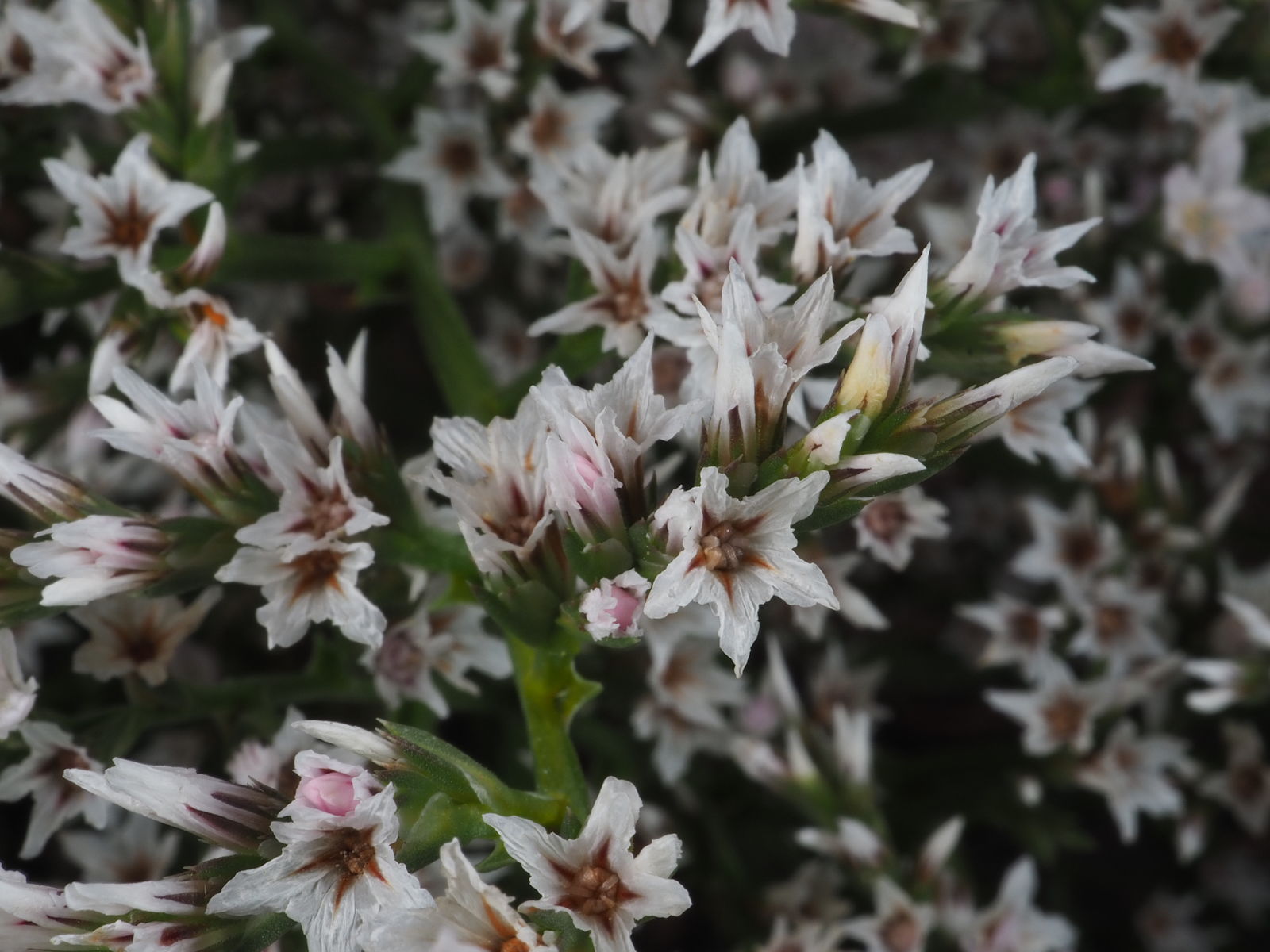
Goniolimon, also known as statice or sea lavender, is a fascinating plant that has captured the attention of plant enthusiasts and gardeners alike. With its vibrant colors, unique textures, and versatile nature, Goniolimon has become a popular choice for both commercial and residential landscapes.
In this article, we will explore 16 surprising facts about Goniolimon that will leave you amazed and intrigued. From its origins to its uses in various industries, we will delve into the remarkable characteristics of this plant. Whether you are a gardening enthusiast, a nature lover, or simply curious about the wonders of the plant kingdom, this article is sure to provide you with valuable insights into the world of Goniolimon.
Key Takeaways:
- Goniolimon, also known as Sea Lavender, is a stunning flowering plant with over 100 species. It’s salt-tolerant, attracts pollinators, and has medicinal properties, making it a versatile and low-maintenance addition to any garden.
- Goniolimon is a symbol of love and appreciation, blooms during summer and early fall, and can be easily grown in containers. Its vibrant flowers and elegant leaves make it a perfect choice for floral arrangements and coastal erosion control.
Goniolimon, also known as Sea Lavender, is a beautiful flowering plant.
Goniolimon is a genus of perennial plants that belong to the Plumbaginaceae family. Its vibrant flowers, with hues ranging from lavender to pink, make it an attractive addition to any garden or floral arrangement.
There are over 100 species of Goniolimon.
The genus Goniolimon comprises a diverse range of species, with over 100 recognized varieties. Each species varies in appearance, ranging from low-growing shrubs to tall, erect plants.
Goniolimon plants are native to the Mediterranean region.
Goniolimon is primarily found in the Mediterranean region, including countries such as Greece, Turkey, and Lebanon. It thrives in coastal areas and is well adapted to withstand the salty and windy conditions of these regions.
Goniolimon is commonly used as a cut flower.
Due to its striking appearance and long-lasting blooms, Goniolimon is a popular choice for cut flower arrangements. Its attractive flowers can add a touch of elegance and color to any floral display.
Goniolimon has medicinal properties.
Certain species of Goniolimon have been used in traditional medicine for their healing properties. They are believed to have anti-inflammatory and antimicrobial effects and are often used in herbal remedies.
Goniolimon is salt-tolerant.
One of the remarkable characteristics of Goniolimon is its ability to thrive in saline environments. This adaptability makes it a suitable choice for coastal gardens or areas with high soil salinity.
Goniolimon flowers attract pollinators.
The vibrant flowers of Goniolimon are an attraction for various pollinators, including bees and butterflies. These insects play a vital role in the plant’s reproduction by transferring pollen from one flower to another.
Goniolimon is a drought-tolerant plant.
Goniolimon is well-suited for arid environments as it has the ability to withstand long periods of drought. Its ability to store water in its leaves and stems allows it to survive in dry conditions.
Goniolimon can be grown in containers.
Whether you have limited space or simply want to add a touch of nature to your patio or balcony, Goniolimon can be easily grown in containers. Its compact size and adaptability make it an excellent choice for container gardening.
Goniolimon plays a role in coastal erosion control.
Due to its deep and extensive root system, Goniolimon helps stabilize soil in coastal areas, preventing erosion caused by wind and waves. Its presence is crucial in maintaining the integrity of coastal ecosystems.
Goniolimon blooms during summer and early fall.
Goniolimon typically flowers during the summer months, extending into early fall. Its colorful blooms make it a standout feature in gardens, providing a burst of color during the warmest months of the year.
Goniolimon leaves are often used in floral arrangements.
In addition to its eye-catching flowers, Goniolimon leaves are also highly valued in floral art. The long, slender leaves provide an elegant touch and complement the vibrant blooms in floral arrangements.
Goniolimon plants require well-draining soil.
To ensure the healthy growth of Goniolimon, it is important to provide well-draining soil. This allows excess water to drain away, preventing the roots from becoming waterlogged and susceptible to rot.
Goniolimon is relatively low-maintenance.
Goniolimon is a hardy plant that requires minimal maintenance. It is generally resistant to pests and diseases, making it an ideal choice for both novice and experienced gardeners.
Goniolimon seeds can be propagated easily.
If you want to grow Goniolimon in your own garden, you can easily propagate it from seeds. The seeds can be sown directly into the soil or started indoors and later transplanted outside.
Goniolimon is a symbol of love and appreciation.
In some cultures, Goniolimon is considered a symbol of love, gratitude, and appreciation. Bouquets and arrangements featuring Goniolimon are often given as gestures of affection and appreciation to loved ones.
As you can see, Goniolimon is a fascinating plant with an array of surprising facts. Its beauty, resilience, and versatility make it a perfect choice for both gardens and floral displays. Consider adding Goniolimon to your collection and discover the joy it brings.
FAQs
1. What is Goniolimon?
Goniolimon is a genus of flowering plants that belongs to the Plumbaginaceae family. It consists of several species that are known for their unique adaptations and medicinal properties.
2. Where can Goniolimon be found?
Goniolimon plants are primarily found in regions with arid climates, such as the Mediterranean, Central Asia, and parts of North America. They are often found in coastal areas and desert environments.
3. What are the medicinal properties of Goniolimon?
Goniolimon has been traditionally used in herbal medicine for its potential anti-inflammatory, anti-viral, and anti-microbial properties. It has also been studied for its antioxidant and anti-cancer activities.
4. How does Goniolimon adapt to extreme environments?
Goniolimon plants have unique adaptations that allow them to survive in extreme environments. These adaptations include succulent leaves, deep root systems, and the ability to retain water during dry periods. They are also tolerant of high salt concentrations in the soil.
5. Can I grow Goniolimon in my garden?
Goniolimon can be grown in gardens as long as the growing conditions mimic its natural habitat. This includes a well-draining soil, full sun exposure, and periodic watering. However, it’s important to research the specific requirements of the Goniolimon species you wish to cultivate.
6. Is Goniolimon endangered?
Some species of Goniolimon may be threatened or endangered due to habitat loss and degradation. Conservation efforts, such as protecting their natural habitats and promoting sustainable land management practices, are crucial for their preservation.
7. Are Goniolimon flowers attractive to pollinators?
Yes, Goniolimon flowers are known to attract pollinators such as bees and butterflies. The vibrant colors and nectar-rich blooms serve as a source of food for these beneficial insects.
8. Can I use Goniolimon for landscaping purposes?
Goniolimon can be a great addition to xeriscapes or dry gardens due to its ability to thrive in arid conditions. Its unique foliage and delicate flowers can add visual interest to landscaped areas.
9. Are there any cultural or historical references to Goniolimon?
While Goniolimon might not be as well-known as some other plants, it has been used in traditional medicine by various cultures throughout history. Its botanical name has Greek origins, with “gonio” meaning angle and “limon” meaning meadow.
10. Can I propagate Goniolimon from seeds?
Yes, Goniolimon can be propagated from seeds. However, the process can be challenging as the seeds require specific conditions to germinate successfully. It is often recommended to start with young plants or seek assistance from experienced growers.
Goniolimon's fascinating facts have piqued your curiosity, but there's more to explore in the world of plants. Dive into the science behind cultivating plants with our article on horticulture facts. If you're a fan of perennials, don't miss the extraordinary facts about Anemone Hepatica. For those interested in unique garden plants, the astonishing facts about Helleborus will captivate you. Each article offers a wealth of knowledge, revealing the hidden wonders of the plant kingdom. So, which topic will you explore next?
Was this page helpful?
Our commitment to delivering trustworthy and engaging content is at the heart of what we do. Each fact on our site is contributed by real users like you, bringing a wealth of diverse insights and information. To ensure the highest standards of accuracy and reliability, our dedicated editors meticulously review each submission. This process guarantees that the facts we share are not only fascinating but also credible. Trust in our commitment to quality and authenticity as you explore and learn with us.


